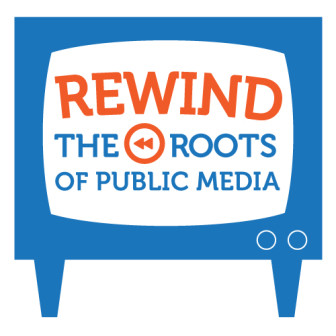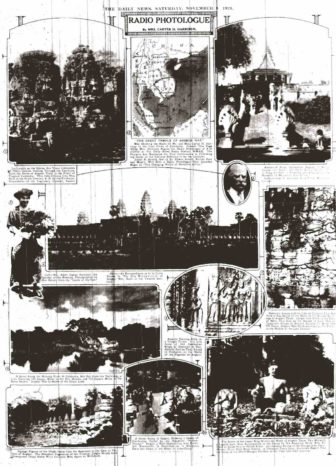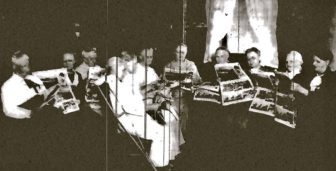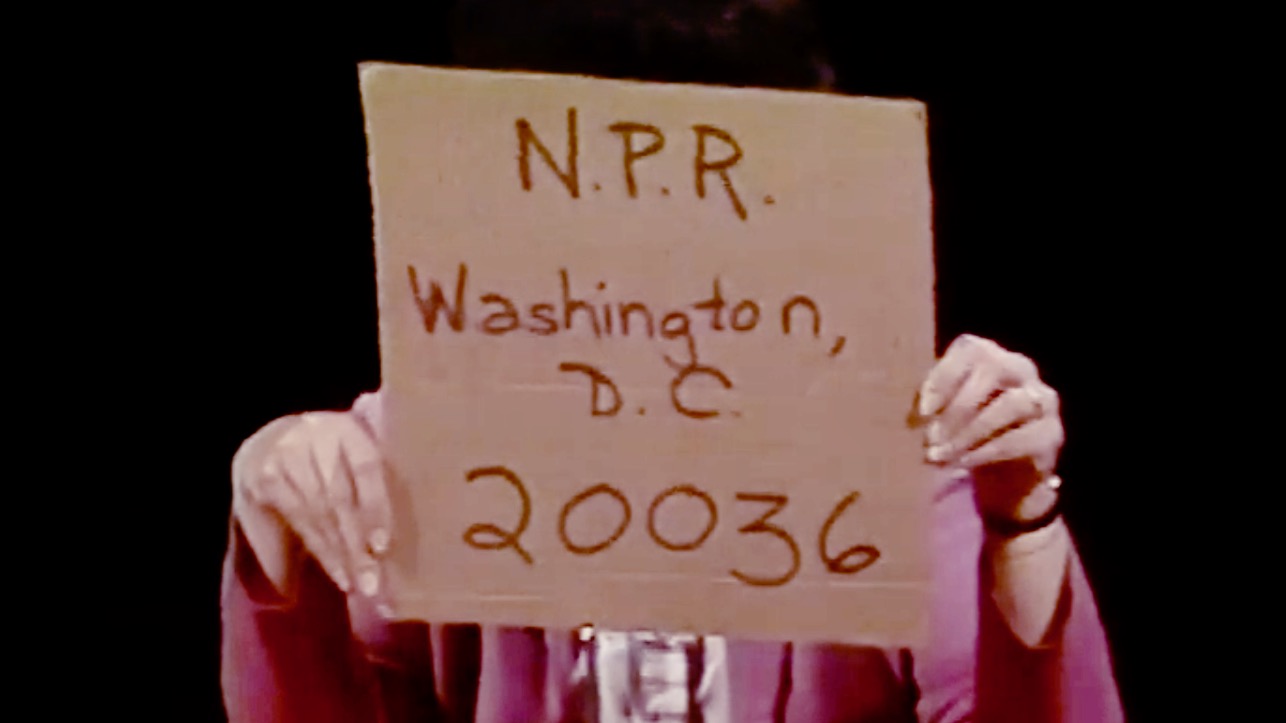‘The World Is Yours’: How the travelogue shaped early public broadcasting

Ollyy / Shutterstock
A much-loved feature of public media is its commitment to bringing the world to audiences. From PBS’ pledges to “take viewers around the world” with shows about international travel, nature and news, to the global voices featured on PRI’s The World and NPR affiliate KNKX’s Going Places, public broadcasters position worldly knowledge and virtual travel as one of their core services to the public.
But the globetrotting quality of public media is neither new nor politically neutral and has roots in the earliest days of American broadcasting. Indeed, the travelogue ― an informational talk about a foreign or faraway place, narrated by an experienced traveler or someone playing one ― was one of the most commonly produced genres in the early days of radio. From the mid-1920s through the Second World War, radio programs about travel were so popular and versatile that they were produced by a number of groups, including educators, the burgeoning commercial networks and the federal government, to demonstrate the social value of radio and impress particular visions of the world onto the public.
 Coined by the lecturer Burton Holmes in the 1890s, the term “travelogue” initially referred to travel talks delivered in theaters by itinerant showmen. Projecting lantern slides and early motion pictures of “exotic” people and places, performers like Holmes recounted their travels through Europe, Asia, North Africa and the Americas, inviting audiences to imagine they were traveling alongside them. Popular in theaters, music halls and on the Chautauqua circuit, travelogues were regarded by the growing middle classes an edifying form of entertainment and a respectable alternative to the emerging, “cheap” amusement of cinema.
Coined by the lecturer Burton Holmes in the 1890s, the term “travelogue” initially referred to travel talks delivered in theaters by itinerant showmen. Projecting lantern slides and early motion pictures of “exotic” people and places, performers like Holmes recounted their travels through Europe, Asia, North Africa and the Americas, inviting audiences to imagine they were traveling alongside them. Popular in theaters, music halls and on the Chautauqua circuit, travelogues were regarded by the growing middle classes an edifying form of entertainment and a respectable alternative to the emerging, “cheap” amusement of cinema.
When radio broadcasting began to take off in the early 1920s, the airwaves were crowded with a cacophonous mix of amateur programming produced by radio manufacturers, universities, newspapers, museums and department stores. The advertising potential of radio was not yet obvious, and many of these groups produced educational programs as a “public service” for listeners. “Radio talks” quickly became a staple of this early radio programming, and talks about travel were particularly common. With low production costs — requiring only an imaginative script, an engaging lecturer and ideally some music or sound effects — and high levels of interest reported from listeners, early broadcasters produced scores of talks on geography, scientific exploration and travel themes.

The printed component of WMAQ’s Radio Photologue, featuring a lecture from Edith Ogden Harrison on “The Great Temple of Angkor Wat.” Chicago Daily News, November 8, 1924.
Radio station WMAQ in Chicago pioneered the radio travelogue genre with its Radio Photologue series in 1924. Owned and operated by the Chicago Daily News, WMAQ aired weekly travel lectures on Saturday evenings, inviting an illustrious roster of authors, curators, travelers and academics to describe the sights and customs of places such as the island of Java, the Eastern Congo, and the Canadian Rockies. In a unique adaptation of the theatrical travelogue tradition, the Daily News published a page of travel images and maps in advance of each broadcast, so that listeners could follow along on a “picture journey” in the comfort of their homes while listening.
Soon, a number of stations began offering travel talks and geography lessons on the radio. San Francisco’s KGO station, established by General Electric in 1923 to promote the sale of radio sets, offered “Geography by Radio” lessons for schoolchildren in 1925. Here, a narrator called “Old Man of the Rivers” took a boy and girl on a sonic tour of the rivers of the world through storytelling and regional music.

Residents of a Chicago nursing home listen to a “Radio Photologue” broadcast about Norway while viewing corresponding images in the newspaper. Chicago Daily News, March 15, 1925.
In Chicago, the powerful retailer Sears, Roebuck & Co. began sponsoring an educational program, Little Red Schoolhouse of the Air, on its fledgling radio station, WLS. Little Red Schoolhouse of the Air transmitted lessons in geography, science and art and music appreciation to an estimated 28,000 students across the Midwest during school hours. The original director, or “schoolmaster,” of the program, Benjamin “Uncle Ben” Darrow, became a vocal proponent of radio instruction as an instrument of social uplift, claiming that by transmitting the sounds of travel, history and government to the masses, radio could serve as “an agency — a magic link — of the world and the classroom.” Darrow’s dream was to establish a federally funded “National School of the Air” that would bring the sights and sounds of the world into classrooms and modernize the nation’s educational system.
Darrow’s dream was dashed with the passage of the Communications Act of 1934, which handed control of the radio spectrum over to commercial broadcasters and drastically reduced the transmissions of independent and educational stations. Still, programs about travel continued to air as the networks sought to prove to the public that they could be trusted with stewardship of the airwaves. Educational radio advocates, their hopes for a national system of educational radio fading, turned their attention toward generating greater public demand for high-quality educational programming over the networks.
Darrow, in a radio address sponsored by the National Congress of Parents and Teachers and broadcast over NBC in 1935, urged parents and teachers to “control the radio dial” and demand programming that not just entertained, but instructed, children. Drawing from surveys he had conducted, Darrow concluded that “travelogs” were among the programs best suited to this objective and happened to be what children most wanted to hear. “Whenever you see your son or daughter with eyes cast a thousand miles into the distance, [they are] daydreaming of an airplane trip across the heart of Africa, or across the Russian steppes,” he said. “They want more travelogs.”
Because travelogues could easily weave together entertaining and educational content with messages about citizenship and global affairs, they offered a unique space on the airwaves in which various educational, commercial and governmental interests could cooperate to produce programming that advanced their respective goals. In 1936, the Ohio School of the Air ― a state-funded instructional radio program directed by Darrow ― produced a series of travelogues through a partnership with the Federal Radio Workshop and the Radio Education Project, an initiative of the Roosevelt administration to allocate emergency relief funds from the Works Progress Administration toward developing limited educational programming on commercial stations. The Federal Radio Workshop employed a group of Ohio educators to write and perform a series of travelogues for schoolchildren on the history, geography and industries of Latin America. The “Travelog” program directly aligned with the objectives of Roosevelt’s Good Neighbor Policy, which sought to replace decades of U.S. military interventionism in Latin America with a “softer” strategy of promoting cultural exchange and trade between the regions.
True to these political goals, the Ohio School of the Air Travelogs mixed lessons on Latin American history and culture with paternalistic messages about Americans’ responsibility to stimulate the economic development of its neighbors to the south. As a teacher’s guide for the program explained: “There is so much that the well populated, strong and vigorous United States could do to aid in the development of these sister republics that every one of us needs to have our attention riveted upon them.” A list of discussion questions further encouraged students to think of Latin America in terms of underdevelopment and unrealized economic potential: “What is taking place in Mexico that gives us hope that within another generation Mexico may have advanced a long way toward a better income and a higher standard of living?” Roosevelt’s policy objectives were so salient in Federal Radio Workshop programming that the radio industry’s trade journal Broadcasting complained that it was allowing “political themes to creep in” to the commercial radio landscape.
 In the same year that the Latin American travelogues aired on the Ohio School of the Air, NBC created its own travelogue-inspired program called The World Is Yours, produced in conjunction with the Smithsonian Institution and the U.S. Office of Education, also under the Radio Education Project. Airing on weekend afternoons between 1936 and 1942, The World Is Yours was the most popular and longest-running of several experimental programs produced by the radio networks, in partnership with Office of Education, to develop educational content for commercial radio. The World Is Yours was touted by the networks, the Roosevelt administration and educators alike as evidence that dramatized educational programming could hold the public’s interest while instructing them on issues of history, civics, democracy and international affairs.
In the same year that the Latin American travelogues aired on the Ohio School of the Air, NBC created its own travelogue-inspired program called The World Is Yours, produced in conjunction with the Smithsonian Institution and the U.S. Office of Education, also under the Radio Education Project. Airing on weekend afternoons between 1936 and 1942, The World Is Yours was the most popular and longest-running of several experimental programs produced by the radio networks, in partnership with Office of Education, to develop educational content for commercial radio. The World Is Yours was touted by the networks, the Roosevelt administration and educators alike as evidence that dramatized educational programming could hold the public’s interest while instructing them on issues of history, civics, democracy and international affairs.
Narrated by a grandfatherly explorer character called “Old Timer,” The World Is Yours drew from the dramatic lecture tradition of the travelogue to explore a mix of topics in geography, natural history, science and the arts. Episodes were given adventurous titles, such as “The Lincoln Legend,” “De Soto’s Search for El Dorado,” “Head Hunters” and “The Inca Empire of the Sun.” Promotional brochures for the program depicted a pair of hands holding the entire globe, a suitcase covered in stickers from destinations around the world, and the heavy doors of the Smithsonian swinging open, promising access to the museum’s “treasure rooms” and urging audiences to “make the world more completely YOURS!” These materials aligned closely with the promotional discourse, touted by educational radio advocates like Darrow for over a decade, that radio could “pick the lock” on elite institutions, such as universities and museums, and bring worldly knowledge to the masses.
But the program’s reliance on “ultra-popularization” techniques, such as dramatic narrative, music and fictional characters, concerned some curators at the Smithsonian. In internal documents, they worried that the program trivialized science and history and contributed to reductive stereotyping of complex civilizations. An analysis of the scripts suggest that these concerns were not unfounded.
An episode on “Primitive Music” (May 8, 1938), for example, opens with a pair of American teenagers dancing to swing music at a party. There they encounter Old Timer, recently returned from a trip around the world and sporting a “tanned face” and linens. He remarks that the music at the party sounds like “something out of Africa” and “reminds me of Zulu ceremonials I’ve seen.” Old Timer proceeds to trace the origins of music and rhythm back to “before the dawn of history,” in a time of “naked savages” when “ancient jungles echoed to the sound of booming drums.” The episode’s narrative reinforced racist understandings of African music as “primitive,” uncivilized, and frozen in pre-modernity, while linking the contemporary genre of swing ― which was pioneered by African-American performers ― to this harmful fiction.
While the program’s tendency to dramatize and distill entire cultures into attention-grabbing episodes bothered some curators, for audiences, this mode of presenting natural history was a hit. Within months of airing, the Smithsonian received over 3,000 letters of fan mail, many coming from “school teachers and others engaged in educational work.” In a letter addressed to Old Timer, one fan wrote that listening to The World Is Yours was “the first time I’ve ever been educated and entertained over the radio at one time.” In another letter, a high-school teacher wrote, “If more educational programs bothered to concoct a script which was painless to listen to, more of us would bother to listen.”
Early travel programs like the Ohio School of Air Travelogs and The World Is Yours were full of contradictions that can be instructive to today’s producers of public media about travel. While produced in the spirit of “bringing the world” to American audiences, democratizing travel and broadening the horizons of schoolchildren, such programs were produced exclusively by white Americans and centered the voices of white men, with no input from the “foreign peoples” that they profiled. More troublingly, such programs reinforced racist and imperialist assumptions about American and Western culture as more “civilized” than other cultures and contributed to paternalistic beliefs that countries such as Mexico needed guidance from the U.S.
Today, producers can avoid these historical traps by centering the voices, histories and perspectives of communities they wish to showcase while reminding audiences of the inherent limitations that come with presenting complex cultures and geographies in brief episodes and segments. While the staid and “authoritative” travel lecture of yesteryear has been abandoned for more conversational and respectful engagements with host cultures, today’s public media travel programs — such as television’s Rick Steves’ Europe and Rudy Maxa’s World, Minnesota Public Radio’s The Savvy Traveler (discontinued in 2004), and the podcast and radio segment Going Places from KNKX in Tacoma, Wash. — largely leave intact the 20th-century tradition of interpreting world travels through the viewpoint of white, often male and financially comfortable Americans.
To their credit, some hosts have openly grappled with their own privileges in and beyond their work. Rick Steves, for example, has written about the importance of travel in challenging our “own ethnocentricity” and acknowledged the privileges of traveling while white, American and male in his book Travel as a Political Act (first published in 2009 and updated for the Trump era in 2018).
As producers continue to experiment with the travelogue tradition in the 21st century, they should consider how to reflect the diversity of American travelers ― who are increasingly young, female and of color ― while handing over more representational power to the communities they visit. New technology offers a promising avenue here, as producers can draw on the participatory potentials of the internet and mobile media to solicit new kinds of contributions and collaborations.
Travel programs also have a unique opportunity (and, I believe, a responsibility) to acknowledge and work to dismantle the realities of racism at home and abroad, which can prevent Americans of color from undertaking or enjoying travel with the same frequency and freedom as whites. The key to any of these improvements is a systemic change in the broadcasting sector to include the voices of communities that have been historically excluded from spaces of media production. Wherever this genre goes, public media’s promise to “bring the world” to audiences will require a deeper, more reflexive engagement with the world than this profession’s forebears initially imagined.
Katie Day Good (@ktdayg) is an Assistant Professor in the Department of Media, Journalism and Film at Miami University of Ohio. Her book, Bring the World to the Child: Technologies of Global Citizenship in American Education, 1900-1946, is forthcoming with The MIT Press in 2019.
This essay appears as part of Rewind: The Roots of Public Media, Current’s series of commentaries about the history of public media. The series is created in partnership with the Radio Preservation Task Force, an initiative of the Library of Congress. Josh Shepperd, assistant professor of media studies at Catholic University in Washington, D.C., and national research director of the RPTF, is Faculty Curator of the Rewind series. Email: shepperd@cua.edu







Public media should be the lens through which young diverse traveloguers are exposed to the core PBS audience.
i currently follow 2 Youtube Vloggers who have a combined audience of over 2 million viewers a week. They travel the world with 4k cameras and laptops and produce broadcast quality programs with a real soul and engagement. I also find that their personal brands are known throughout the world. Even PBS’s core travel talen do not have that brand identity.
Time to wake up !!